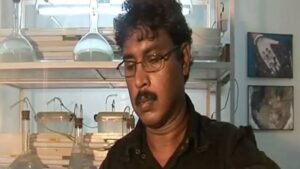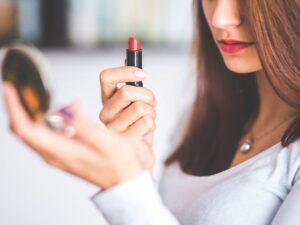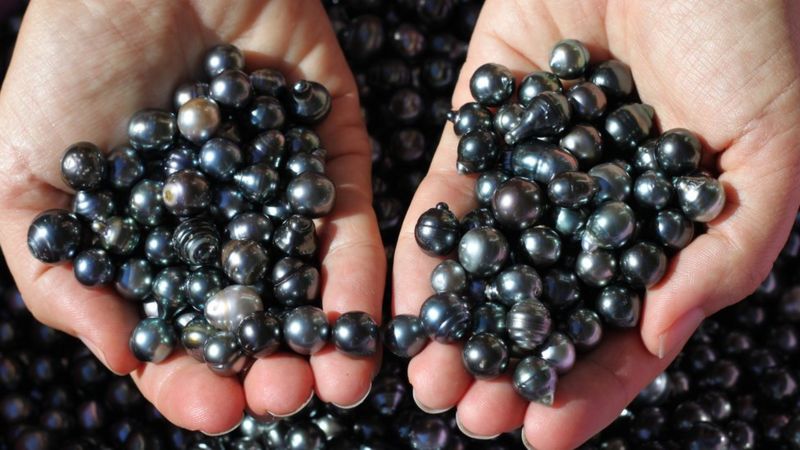
This is a story of a person coming out of an ordinary family to achieve extraordinary achievements, which cannot be believed.
This is the story of Dr. Ajay Kumar Sonkar, an aquacultural scientist who came out of Allahabad and illuminated the name of India all over the world, who had done the charisma of getting India’s name included in artificial pearl making countries about three decades ago.
In his career spanning the last three decades, Sonkar has made various achievements in the cultivation of pearls. But first of all, about his new work, on which aquacultural scientists around the world are amazed.
Dr. Sonkar has shown the work of growing pearls in flasks through tissue culture. In simple words, he has done the charisma of growing pearls in an artificial environment by taking out the tissues that are inside the oysters. That is, the dependence on oysters to grow pearls has ended and with this there is no need for the marine environment necessary for that oyster.
This new research by Dr Ajay Sonkar has been published in the September 2021 issue of the scientific journal ‘Aquaculture Europe Society’, focused on the world of marine animals. According to this research, Dr. Ajay Sonkar has done the work of growing pearls from oyster tissue of Andaman and Nicobar Islands in his home lab in Prayagraj.
Meaning the tissue extracted from the oyster has been able to do its work naturally even about two thousand kilometers away, which it does in the natural environment of the ocean.
Dr Ajay Kumar Sonkar told about the research, “Pinktada margaritifera oysters are found in very salt water sea. After removing their mantle, I brought them to my lab in Prayagraj, two thousand kilometers away. All the measures to keep that mantle safe It also took us 72 hours to bring him to Prayagraj, but he was completely alive and healthy. Then cultured him and injected him, he not only made pearly component but pearl was also ready.”
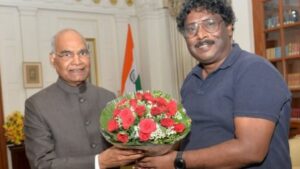
Describing his new technology as important, Dr. Kuldeep K Lal, director of the National Bureau of Fish Genetic Resources, a Lucknow-based institution of the Indian Council of Agricultural Research, said, “Certainly Dr. Sonkar’s new work is very important. There can be a radical change. The technology of growing pearls will not depend on the sea. This in itself is astonishing work.”
Till now, the cultivation of artificial pearls is not imagined without the oysters and shells found in the sea. Like conch shells and cowries, pearls are also biological products of oysters or other organisms of the fish group found in water.
When these creatures open their mouth to breathe, sometimes something outside goes inside them, they first try to get it out of the body, but when they are not successful, then to reduce their discomfort. A special kind of chemical is released from the body on it. Due to the effect of chemicals, this thing turns into a pearl with time. Although the formation of pearl naturally occurs in one in a million oysters.
But the technology of growing artificial pearls has changed the world of pearls a lot and Ajay Sonkar’s new work is being considered an important step in that direction. By the way, Ajay Sonkar has done this work in the most difficult phase of his career. It is interesting to know about his journey before knowing the story of his difficulty.
- Sonkar shocked the world from Prayagraj
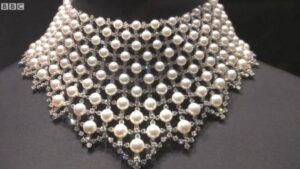
Dr. Ajay Sonkar’s new work may be astonishing, but in the past three decades in the world of pearl growing, he has been surprising the world with such innovative works. His interest in making pearls started in 1991 in Katra, Allahabad.
Sonkar, who studied physics, chemistry and mathematics at Allahabad University, wanted to become an engineer, but a story in an episode of Doordarshan’s afternoon TV show based on the UGC educational program, which aired in the afternoon, changed his life.
Sonkar explains about that episode, “In that story the Japanese were telling about pearl culture, when I saw those people extracting pearls from oysters, then I got interested in it. The reason for this was that we had There was a pond and there were oysters in it.So you can say that it got bogged down in my mind that I too can make pearls though I didn’t know anything about technology and internet was born then and in India He was not present.”
Dr. Ajay Kumar Sonkar narrates about his early days, “I put oysters in my pocket and went to ask a professor of animal department of Allahabad University, Sir, what is this, then he said it is called muscles. I asked that sir. How does it open, then he said boil it in water. Then I said that sir, he will die, then he said, otherwise what, he opens it only after death, all the oysters in the university are dead.
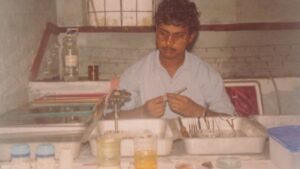
Ajay Kumar Sonkar had realized that it is not so easy to grow pearls. But he did not give up hope. He told, “There was an office of the fisheries department near Darbhaga colony in Allahabad. Fearfully asked the director there that I have a pond and I want to grow pearls, someone will help. He looked me down from above and said that here So we are not able to grow fish, you are thinking of pearls. Read, write, you are of age to read and write. Pearls do not exist in fresh water, someday bring the sea to me and I will see again.
But Sonkar did not give up. The exercise of gathering information about making artificial pearls started. But in the then world there was no easy way to get information. But it is said that if the passion is true, then the path starts being made.
- Where did you get the inspiration to make pearls?
At AH Wheeler’s shop at Allahabad station, he accidentally found an old issue of National Geographic, a special issue based on information about artificial pearl manufacturing. Sonkar has not only bought it but has kept it till date.
With all this, he started experimenting with his understanding with the oysters of his pond. Holding oysters and placing them in big pots and watching them gaze, had become Sonkar’s pastime. This task was not so easy in the middle class society.
Soon they came to know that these oysters open their mouths to breathe and also knew that if any foreign object enters it, it can become a pearl. He said, “When I started studying, I came to know that only Japan had the technology to grow pearls around the world, they did not tell other countries. And to make better pearls which is to inject the raw material ie nucleus It is found in the Mississippi River of America. But America did not have the technology. So if you wanted to make pearls, you had to take help from Japan.”
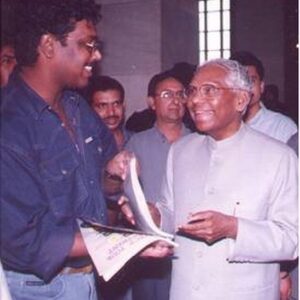
But in the early days, Sonkar started his experiment by putting small pieces of white cement after opening the mouth of the oyster. Recalling those days, Sonkar says, “What to tell, whenever someone used to meet, he asked brother became a pearl. In a tone, people say brother is growing pearls nowadays. Parents say that he has gone mad. But I don’t care about them. was falling.”
This exhausting hopeless experiment Sonkar only persevered with his insistence and within just a year and a half he took the world by surprise by making artificial pearls in fresh water, that too without Japanese help.
This was the first time that Japan was challenged in the world of growing artificial pearls. This success achieved in 1993 brought Ajay Sonkar in the headlines overnight. According to Sonkar, for the first time, out of hundreds of oysters, pearls were made in 36, the family members were astonished, but I was wondering why the rest were not made.
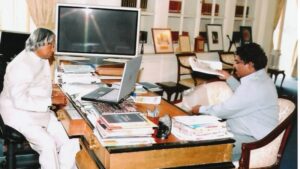
From May 14 to 19, 1994, the first International Conference on Pearl Culture was held on the Hawaiian Islands and Sonkar also received an invitation to attend that event. Sonkar recalls, “They had sent air tickets. The first time was to board the plane. When I reached Hawaii Island, I was terrified to see the variety of people there. I was the youngest on the top. I found a way out. Thought I would not look at the people, when I read my paper in the conference hall, I did not even once take my eyes off the leaflet. When the form was completed, I saw people standing and clapping. I still do not see him I forgot.”
However, the journey that started since then continues even today and Ajay Sonkar has given his lectures about pearl culture in at least 68 countries around the world. Dozens of his research papers have been published in many aquacultural journals.
After this, within two years in 1996, Ajay Sonkar created a 22 millimeter long nucleus, which is estimated to be the largest nucleus in the world of artificial pearl manufacturing. This nucleus was tested in America and Dr. C. Richard Fösler, the most eminent scientist in the world of artificial pearl making, estimated its cost in the US market at around $ 30,000, which was five to six times more than the Japanese and American nuclei.
When the discussion of Sonkar’s work spread all over the world, the Central Marine Fisheries Research Institute of the Government of India also offered him to do his work in 1999. But by then, on the basis of his studies and research, Sonkar decided to work in the maritime area of Andaman and Nicobar Islands of India and he started work there from 2003 with the permission of the central government and local administration.
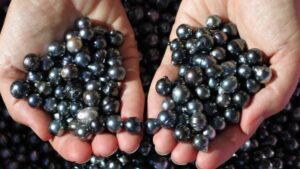
In fact, a species of oyster called Pinctida margaritifera is found in the Andaman sea area, from which black pearls could be made. Soon, Sonkar established Andaman, known for its black water, as the center of black pearls.
- From Andaman’s Pride To Suffering
Although he was doing his work independently, the demand for his pearls started increasing in the artificial pearl market. Andaman administration continued to present his work as its achievements.
His work was appreciated by the President of India from RK Narayan to Abdul Kalam and Ram Nath Kovind. Sonkar kept on meeting these people and giving information about his work. In this sequence, he also attracted the attention of the world by making a pearl of 43 mm copy of Ganesha.
But it is said that time does not remain the same and a period of difficulties started for Sonkar. In 2019, the Andaman administration asked him to stop working at sea. For this, the administration cited a study by the Central Marine Fisheries Research Institute, which states that the availability of Pinctida margaritifera in the Andaman is not high enough to be commercially produced.
After this, Sonkar claims that the laboratory built above sea level was attacked by unknown people and it was destroyed. Against this, Dr. Ajay Sonkar went to the Calcutta High Court and the court stayed the order of the administration. That is, Sonkar got a place back to prepare artificial pearls.
When asked how all this happened to Sonkar, whom the Andaman administration has been projecting as its pride, Sonkar says, “The people of the government bureaucracy started harassing me. The matter is under the court and Corona The lockdown had also come. In such a situation, I continued my work in Allahabad and due to this the work of tissue culture was successful. I am not a poor person, I am a scientist, so I can do this work anywhere.
On this whole matter, Andaman South Deputy Commissioner Sunil Anchipaka says, “I have been here for a year and during this time no such case has come to my notice. I can redress their grievances, or I can ask the concerned authority to redress their grievances.”
Sonkar says that after the end of the Kovid crisis, he is once again thinking of grooming his work in Andaman. However, there is definitely a tension in his mind about the government bureaucracy. He says, “On one hand Modi ji is talking about Made in India, on the other hand people at the lower level are not taking it seriously.”

Although till now Ajay Sonkar has done his work as a private enterprise, but he wants to take his skills to other people in collaboration with the government. He said, “The government is very serious about pearl culture. The government wants to develop it. I have worked independently. If the government wants, I would like to contribute for the country’s economic progress, it is my pleasure too. Will talk.”
Kuldeep K Lal says, “Indian pearl culture can benefit from Ajay Sonkar’s technique. But there are two things to this – one is how many people Sonkar would like to share his technique with and secondly it is so labor intensive. The job is that only one or two people out of a thousand can learn it.”
About the possibilities of Indian pearl culture, Sonkar says, “Japan has the technology but it does not have a natural climate. It gets so cold that a round of pearl culture takes at least two and a half to three years, our Here it happens between six months to a year. India has this advantage. Our pearls are also of better quality.”

